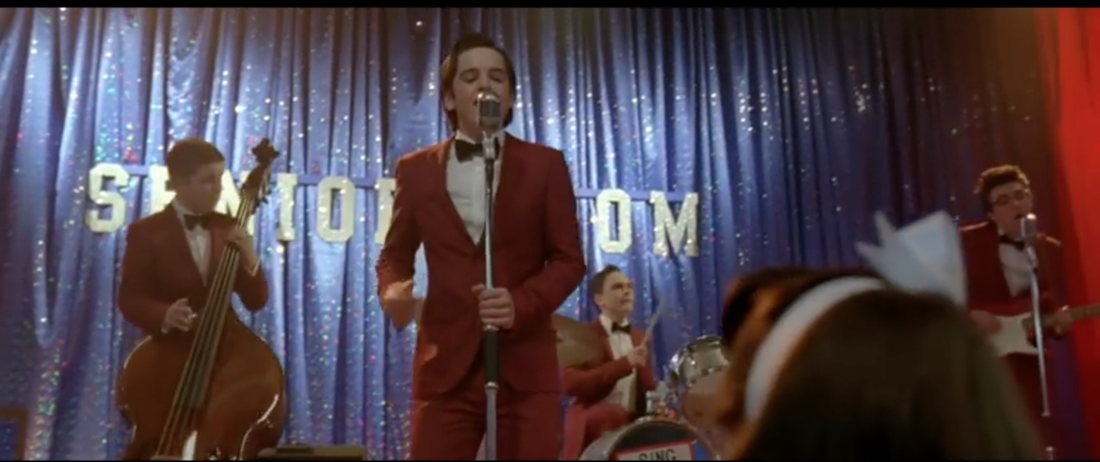By Perri Chastulik
Every film has “music” in the literal sense, i.e. sound elements like dialogue and sound effects. However, the score has a particular power to elicit emotion and heighten the power of an image. It increases moments of drama, romance, and comedy. Sing Street has all of these elements and uses its score effectively to punctuate them. For example, the song “Up” is lighthearted and warm, played in a major key. It plays as Cosmo records the song with his band and while Raphina listens to the tape of it, smiling. Sing Street manages to work against its own cliché in this moment, showing that there is more to the boy’s life now than just impressing the girl; he is fulfilled by playing music as well.
Scott D. Lipscomb and David E. Tolchinsky included an insightful Suzanne K. Langer quote in their paper The Role of Music Communications. She says “music has all the earmarks of a true symbolism, except one: the existence of an assigned connotation.” Viewers can take the songs of Sing Street (or any film, for that matter) to mean anything they want. The song “Riddle of the Model,” for instance, is fittingly enigmatic. What it “means” is up to each individual, and ascertaining its precise function is not essential to the plot or enjoyment of the film. Sing Street does not try to create a message that is the same for everyone. Instead, it remembers that dialogue, visuals, and music have to work in harmony. It performs this better than many modern romantic comedies, harkening back to the days of Grease when every song came at the precise moment it was needed.
What distinguishes Sing Street from other films is its ability to use music not just to heighten the main emotions of its genre (romance and comedy, in this case) but also to make every moment feel that much more powerful. Dramatic scenes like Brendan’s breakdown have a fitting backing track. Songs like “Drive It Like You Stole It” or “Up” show the bubbly feeling of falling in love. The film effectively uses the two main functions of film music; signifying emotion and providing continuity.
1. Lipscomb, Scott D., and Tolchinsky, David E. "The Role of Music Communication in Cinmena." Northwest University, n.d. Web. 12 Feb. 2017.
2. Sing Street. Dir. John Carney. Perf. Ferdia Wash-Peelo and Lucy Boynton. The Weinstein Company, 2016. DVD.
3. The Movie Times. “Lucy Boynton: SING STREET.” YouTube. YouTube, 12 April, 2016. Web. February, 2016


 RSS Feed
RSS Feed
